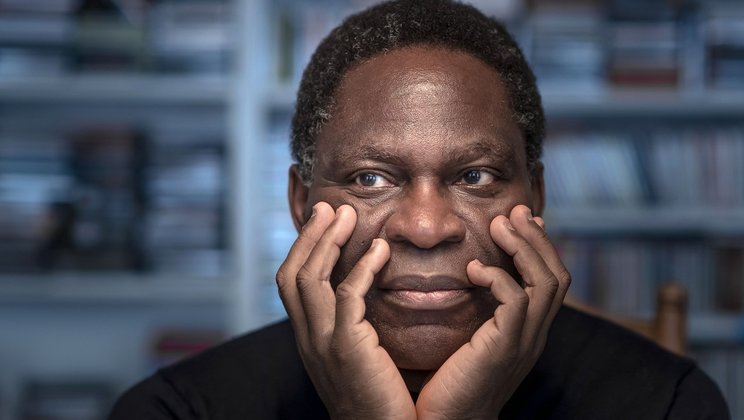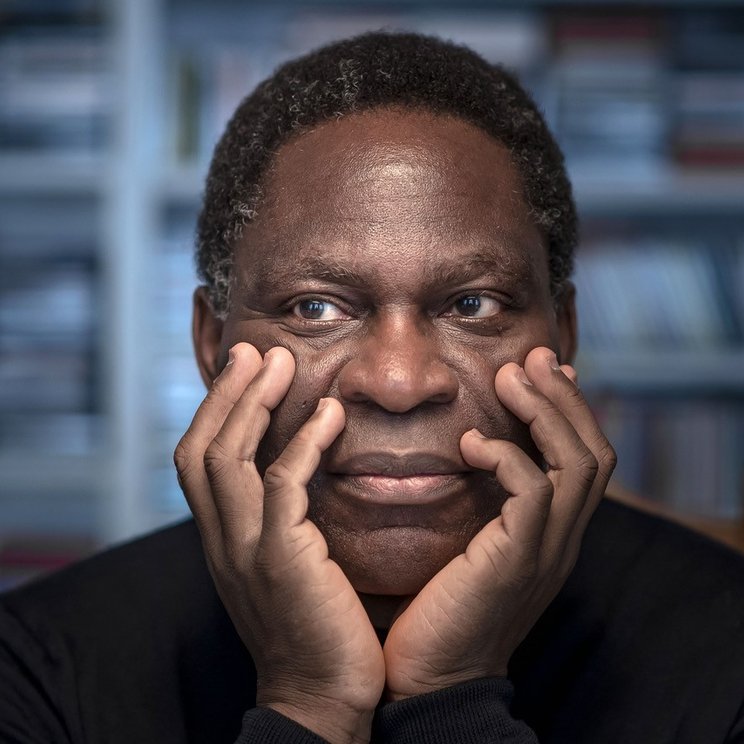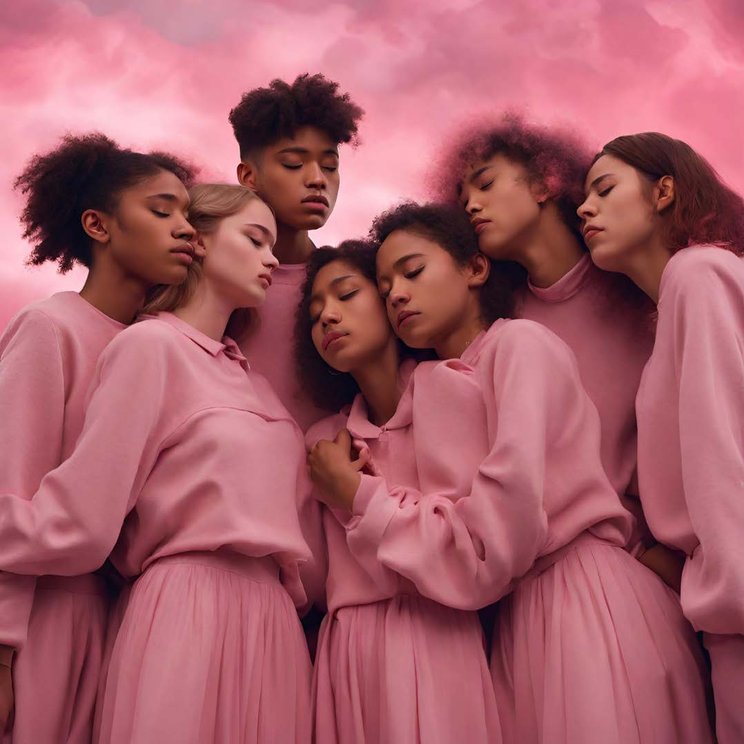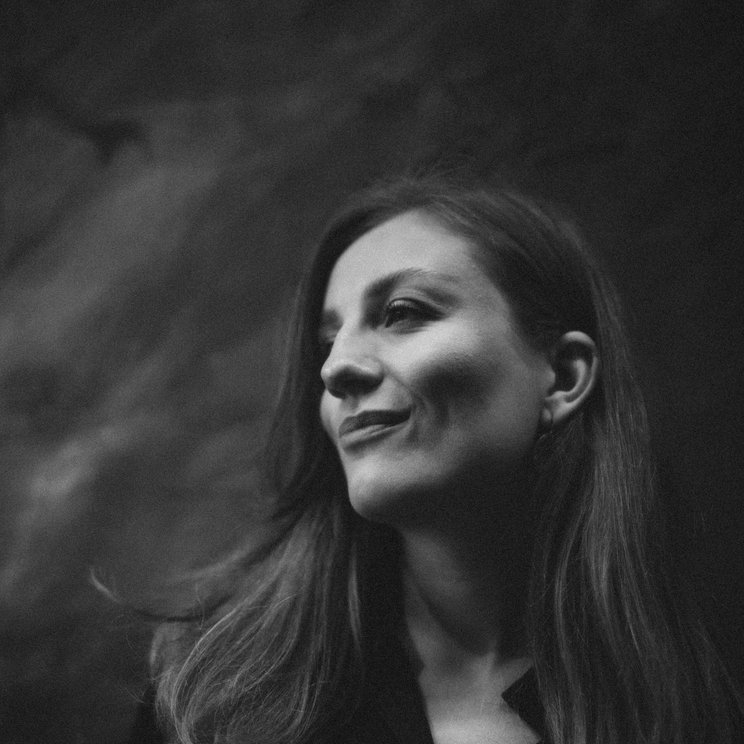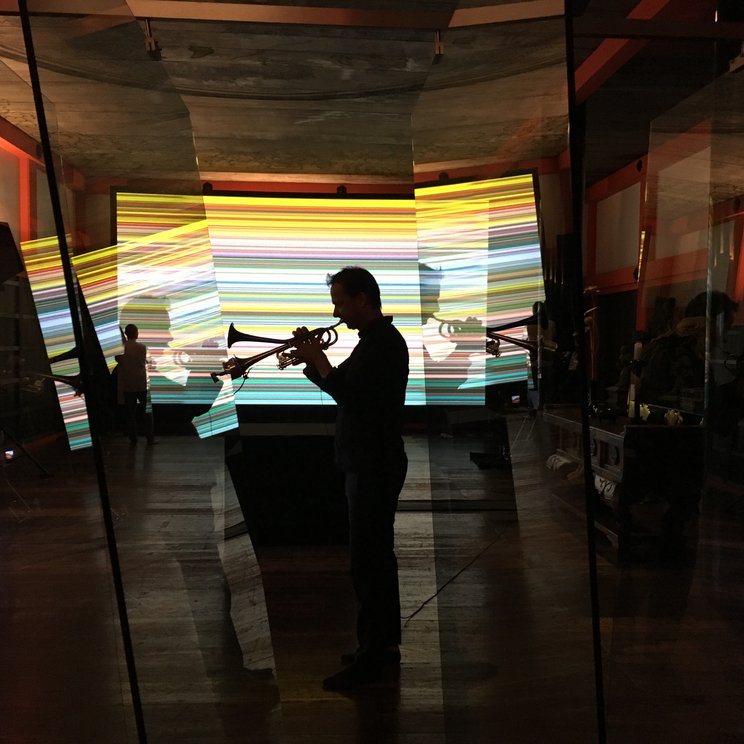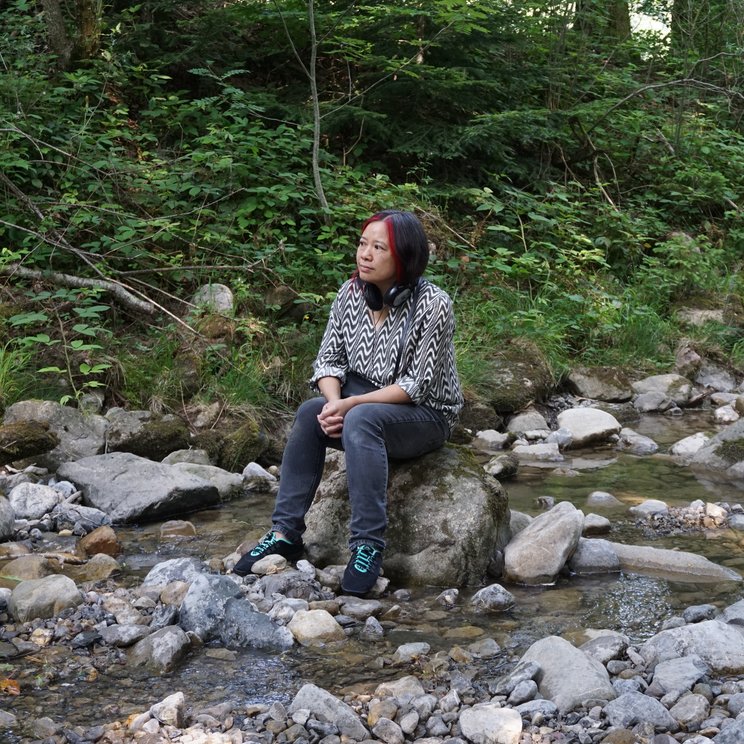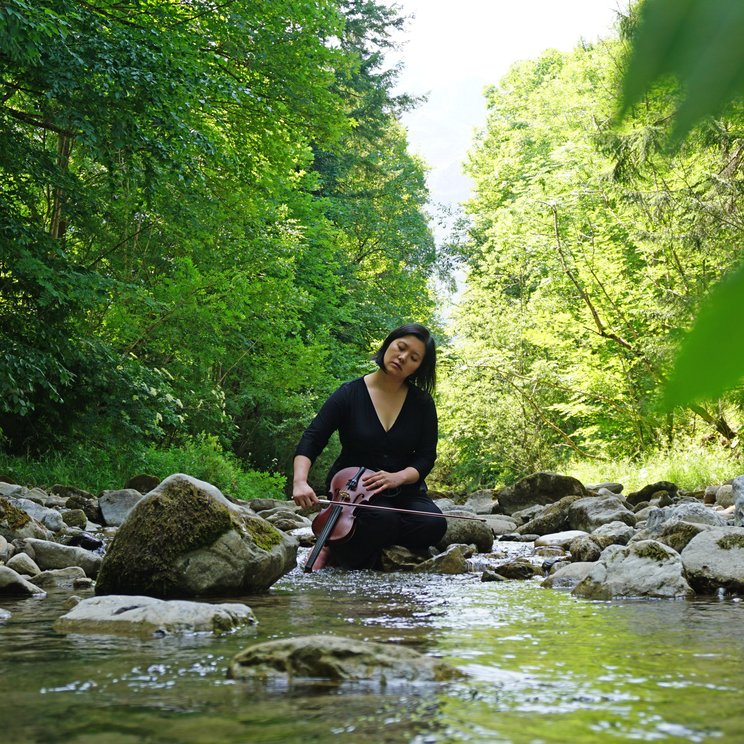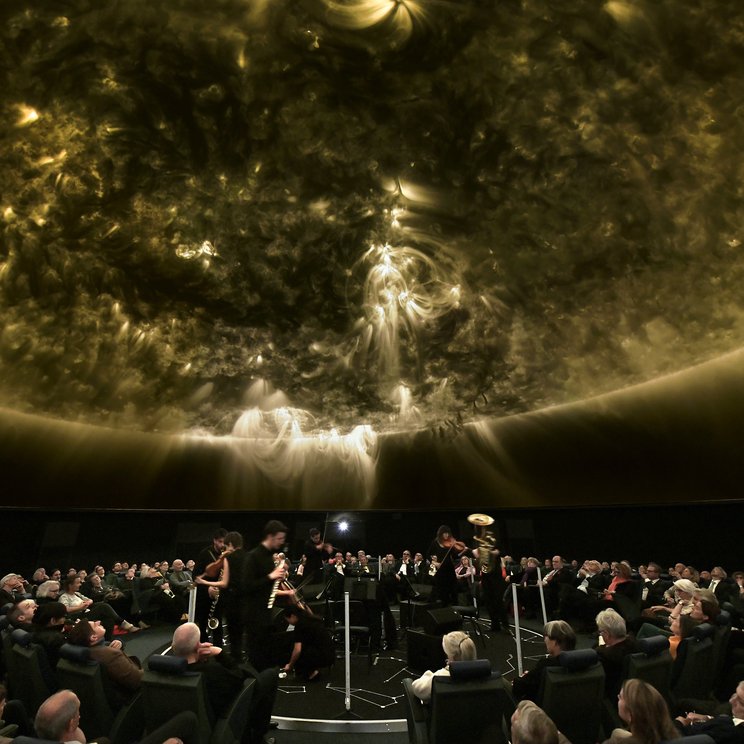Charles Uzor über seine Werke «8'46''» und «Katharsis Kalkül»
«Tod/Leben» — Konzert 4
Konzertprogramm
Hier finden Sie das kostenlose Konzertprogramm zum Konzert 4 «Tod/Leben».
Werkkommentare
-
Charles Uzor über «8’46’’ George Floyd in memoriam» (2019–21) und «Katharsis Kalkül. George Floyd in memoriam» (2023)
wie soll man sagen …
Ich schrieb 8’46’’. George Floyd in memoriam als Reaktion auf seine Ermordung am 25. Mai 2020 in Minneapolis. Viele sind mit dem Video konfrontiert worden, das Derek Chauvin zeigt, wie er auf Floyds Hals kniet, bis dieser nicht mehr atmen kann. Als ich das Video sah, war mir, als würde ich komplett die Fassung verlieren. 8’46’’ hat keine «Partitur», nur ein paar Regieanweisungen. Keine Musik, nur Atem. Und der fast unangemessene Wunsch nach Verbindung vor der Leere – im Sinne einer absoluten Abwesenheit dessen, was sein könnte.Bald nach 8’46’’ schrieb ich Bodycam exhibit 3, ein zweites Denkmal für George Floyd. Bodycam versucht, eine Antwort auf die explizite Brutalität des Mordes an Floyd zu finden. Die drei Protagonisten – der Polizist, die Zeug*innen und Floyd – interagieren in Orchestergruppen. Alle Musiker*innen erhalten eine «Partitur» aus Audioclips, für die ich Aufnahmen der Bodycam des einen Polizisten zusammengeschnitten habe. Jeder «Charakter» wird von zwei Spieler*innen dargestellt, die sich im Unisono-Spiel wiedererkennen.
Die beiden Floyd-Stücke zeigen zwei Aspekte der Szene:
1) Floyds Atmen
2) die Interaktionen der Protagonist*innen (Polizei, Zeug*innen, Floyd)
Ein dritter Aspekt – der Blick des Konzertpublikums (oder ein Ende, das dem Publikum etwas Frieden geben könnte) – schien zu fehlen. Doch die Idee der Katharsis erwies sich zusehends als schwierig. Im aristotelischen Drama folgt die Reinigung auf unvorstellbaren Schrecken und auf das Ausgiessen von Schweineblut über unsere Köpfe. Was aber wäre, wenn der Schrecken niemals aufhören, wenn jegliches Gefühl der Katharsis auf den Kopf gestellt würde? Was wäre, wenn alle Melodien und Harmonien sich rückläufig bewegen und Erlösungsberechnungen obsolet würden?Katharsis Kalkül, das dritte Stück des Zyklus, hat eine richtige Partitur und Musik, die von einem Tonband unterbrochen wird – von einem Tonband, das die Angemessenheit der Verwendung eines Tonbands an sich erörtert. Ist die Verwendung eines Audiofiles, das online von Millionen Menschen gehört wurde, eine Blossstellung und Instrumentalisierung der Zeug*innen und ihrer Reaktion auf die Obszönität des Geschehens? Werden auch das Publikum und das Ensemble dadurch instrumentalisiert, dass sie mit Worten konfrontiert sind, die man selbst kaum auszusprechen wagt? Müssen meine künstlerischen Ausdrucksmittel auf ihre juristische Unanfechtbarkeit beschränkt werden, oder kommt es vielmehr auf den Respekt an, auf meine innere Motivation und auf die Art, mit dem Gegenüber zu sprechen?
Katharsis Kalkül bewegt sich gleichzeitig vorwärts und rückwärts durch eine Kette von 108 Akkorden. Die Katharsis wird zugleich erwartet und verloren, sie erfolgt frühzeitig, vor dem Drama. Das Ende ist wie der Anfang, wie auf einem Rad der ewigen Wiederkehr. Ein charakteristisches instrumentales Merkmal findet sich im Schlagzeug: Während in Bodycam exhibit 3 die Rührtrommel streng und militant den Takt schlägt, begleitet in Katharsis Kalkül das Becken die Musik wie aus der Ferne mit einem ständigen Rauschen und legt einen Schleier über den Orchesterklang. So wie wir uns in der Trauer verhüllen und den Blicken anderer entziehen, verdeckt der Beckenklang das, was wir als unaussprechlichen Kern der Szene empfinden.
Es ist an der Zeit, das aristotelische, möglicherweise falsche Verständnis von Katharsis und seinen Überfluss an Zynismus bei der Rechtfertigung des Bluts anderer in Frage zu stellen. Namen und Leben zählen: Trayvon Martin, Aiyana Jones, Michael Brown, Freddie Gray, Renisha McBride, Tamir Rice, Tire Nichols, Eric Garner, Walter Scott, Breonna Taylor, Nicholas Thomas, Dontre Hamilton, John Crawford III, Meagan Hockaday, Eric Harris, Walter Scott, Jonathan Ferrell, Sandra Bland, Yvette Smith, Timothy Russell, Malissa Williams, Tony Robinson, Samuel DuBose, George Floyd, Leonard Allen Cure … sowie bei jedem der namenlosen Gewaltopfer.
Der Zyklus endet damit, dass wir die besten Zeug*innen sind.
Weitere Informationen zu Charles Uzor und seinem Schaffen finden Sie hier.
-
Liza Lim über «Multispecies Knots of Ethical Time» (2023)
Dies ist ein Stück über Zeit: über unsere eigene Endlichkeit und über die ökologische Krise. Der Protagonist ist ein Fluss – ein Symbol für Vergänglichkeit und (gefährdete) Kontinuität. Im Video von Morena Barra kommuniziert die Performerin Winnie Huang mit den Lebenswelten des Flusses. Die vielfältigen Stimmen des Wesens Fluss ermöglichen es uns, ein radikales Anderssein zu imaginieren und das Gespür für unsere eigene Identität zu erweitern. Dieses Stück ist Teil eines grösseren Projekts, in dem ich die Künste mit umfassenderen Ansätzen verbinde, die sich für eine artenübergreifende Gerechtigkeit einsetzen: für die moralischen, politischen und rechtlichen Ansprüche von Tieren, Pflanzen, Flüssen, Wäldern und Ökosystemen, die mit dem Schicksal und dem Wohlergehen von uns Menschen verbunden sind.
1. Calling the Ancestral River
The River is a sentient elemental being of enormous creative power made up of multiple life-worlds.We dream with rivers.
We can conceive philosophies of time and time relations because we have encountered real rivers.
The river is neurologically ancient in us – it is part of our sensorium, our cultural DNA, shaping how we imagine concepts of time and energy. It’s deep inside our bodies and our language: stream – streaming, current – currency, rivulet – trickle – flume – channel, flux – outpouring – cascade – torrent, drought and abundance, transience and continuity.
The opening part of the work is a ceremonial calling forth, a caressing, a veneration of the river, or actually, a specific river: the Eigenthal-Rümlig that flows in the subalpine Eigenthal valley in the Canton of Lucerne overlooked by the Pilatus Mountain.
2. Polyvocal River
The Rümlig river is full of voices. It is a complex ecosystem of beings: plants, animals, birds, insects, waters, winds, air, rocks, earth and more. The Rümlig is an incredibly melodious river: it pulsates with high and low pitches, deep rumbles and the finest champagne fizz of bubbles as its waters flow over rocks of all sizes and shapes, passing through pools of varying depth, grottos and channels.Water and rocks – resistance creates music!
The river’s polyphonic voices open up the experience of more-than-human subjectivities, the possibility of a radical imagination of otherness and an expanded sense of selfhood. The gestural performer Winnie Huang communicates with the “more-than-human” life-worlds of the river. In the film, she plays the river’s flux with a violin dipped into the water. The flowing water acts as a “bow” that sounds the violin strings producing an otherworldly and beautiful aquatic aeolian effect (this idea and approach builds on the work of sound artist Bennett Hogg and filmmaker Merrie Snell). [This idea of playing a river with a violin was developed by the sound artist Bennett Hogg in collaboration with artist and writer Merrie Snell. They have given their permission/blessing for the further development of these techniques in this work]. The performer, Winnie, is inside the total scene, and at the same time is herself being “played” by river and world. She brings the icon of the river (the “real” river and the river of time) to the stage. The recorded sound and film are articulated and sculpted live by the performer using a MIDI controller (a Genki Wave Ring). The digital instrument allows the scored gestural actions to be translated into fine-tuned transformations of sound (just like performing on an acoustic instrument).
The ancient Greek Philosopher Herakleitos said something we can all feel in our bones: one can never step into the same river twice. The river embodies the transience of life, an impermanent current in which any moment can only be lived once. We see the randomness and the brevity of our time as the river restores or reminds us of our human size, tiny within the universe.
3. Pornographies
Yet, tiny as we are, humans have ushered in the Anthropocene, the era in which human activity is having a catastrophic impact on the Earth’s functioning at a global level. We’re in a time of extinctions… Our greed and hubris, distractions and destructiveness have created toxic feedback loops in climate systems. This composition was written at a time of 420ppm CO2 in the New Calendar. Global temperatures have risen approximately 1.2 degrees Celsius above the pre-industrial temperatures of the 1800s. We’re seeing other kinds of rivers: water rushing down roads and into subways and shopping malls, sweeping away cars and houses and people… We’re living ina runaway time of tangled accelerations that lead to a death spiral.
There is a vertigo in the movement of time: an unravelling forwards, backwards and upside down of displaced patterns. Runaway time, dilated time, wasted, sliced-up, knotted, damaged time…
4. Resistances and Flow
Environmental Humanities scholar Deborah Bird Rose writes of life as an embodiment of sequential and synchronous time: “embodied time is always a multispecies project. It follows that life depends both on the sequential processes of generational time/gift and on the synchronous processes of multispecies nourishment.” [Rose, Deborah B. “Multispecies Knots of Ethical Time”, In Environmental Philosophy, Vol. 9, No. 1, Special Issue: Temporal Environments: Rethinking Time and Ecology (Spring 2012), 127-140. p.131. Article accessed 20 Jan 2023. http://blog.wbkolleg.unibe.ch/wp-content/uploads/Rose2012_Multispecies-Knots-of-Ethical-Time.pdf] Winnie Huang comments: “I feel especially moved by these ideas of birth being a condition of a gift, but also a need, and this entanglement of being nourished and nourishing. This communication between sequential and synchronous, ‘these processes and patterns intersect to form dense knots of embodied time.’ [Rose, Deborah B., p.131] It’s a constant reminder of our interconnectivity and dependency, diversity and perspectives, our communications and relations in every direction constantly.” [Private email with Winnie Huang, 25 November 2022. quoted with permission]In the case of species extinction, there is a “double death” since there is no regenerative future for a group; but then those deaths also unravel the futures of other life systems… James Hatley writes: “What is important about a death narrative is that one’s own passing away becomes a gift for those who follow as well as an address to them.” [Hatley, James. 2000. Suffering Witness: The Quandary of Responsibility after the Irreparable. Albany: State University of New York Press]
I’m interested in this “calling out”, vocative gestures that are full of desire for the entangled encounter.
What do we bear witness to? Where are the silences?
And what of the River Being’s desires? The Birrarung (or Yarra) River in Australia, whose voice also appears in this work, has been declared a “living entity”. The Whanganui River in New Zealand; the Mutuhekau Shipu (or the Magpie River) in Canada; the Amazon River in Columbia, and rivers elsewhere, are being granted legal “personhood”. This legal tool is being used to recognise natural and legal rights for rivers amongst which are the rights “to flow, maintain biodiversity, be free from pollution, and to sue.” [Berge, Chloe. “This Canadian river is now legally a person. It’s not the only one.” National Geographic, April 16, 2022. Article accessed 19 August 2023. https://www.nationalgeographic.com/travel/article/these-rivers-are-now-considered-people-what-does-that-mean-for-travelers]
5. The Unborn watch us
Coiled within us are our ancestors and the as-yet-unborn. Considered like this, “we” are not alone but belong to a collective subjectivity travelling in time. We are the ancestors of the future and our particular “knot” in time is, Deborah Bird Rose suggests,a gift that should be oriented towards responsibility.
Breathing in and out, listening, the musician at the river weaves a musical figure that passes across violin strings, rock and water. The violin bow is rocking back and forth, in grief or ecstasy, un-consoled or compassionate. An emerging song is like an inner quickening (that moment when a mother first feels their baby moving within). Can we surrender to a de-centering of the human to expand into the vibrancy of a multispecies kin-making?
6. Multispecies knots
Breathing – touching – listening. That is the basis for a communication with the elemental sentiency of water and rock. We see the performer take up a Chinese calligraphy brush and make marks on a rock with water. This “water score” or “secret poem” disappears into the rock as soon as it’s written. The human being rubs up against the consciousness of the river. How can one say that?!That’s what music and poetry are for: unknowability, astonishment.
Several lines from the writings of Etel Adnan are woven into the rock writing:
“I lived exclusively by my own wits, this is why I am a river.” [Adnan, Etel. 2016. Night. New York: Nightboat Books]
“Not seeing rivers is also another way of dying.” [Adnan, Etel. 2012. Sea and Fog. New York: Nightboat Books]
“I am talking to you because I need you, and to need means to love. Let’s see. Am I just establishing inventories? Where am I?” [Adnan, Etel. 2020. Shifting the Silence. New York: Nightboat Books. Also see https://lithub.com/etel-adnan-contemplates-aging-amid-the-california-wildfires/]“There’s an equilibrium we all possess, while it eludes us, and the possibility, regardless, of swimming twice in the same river… but when, and where…” [Adnan, Etel. 2020. Shifting the Silence New York: Nightboat Books. Also see https://lithub.com/etel-adnan-contemplates-aging-amid-the-california-wildfires/]
A hum keeps the connection and the current alive. We can venerate the beauty of the visible face of nature and attune to its invisible spirit. That is a form of prayer in which the sublime power of place fills us with wonder. We follow the course of the Rümlig River upstream, passing the three locations where the performer was seen bowing a violin, listening; washing the instrument at a grotto; dipping the violin into a cascade, touching the flow, stroking rocks, and playing a singing bowl. We pass by and glance at offerings of flowers and fruit, made to the river. Rising, high up above the trees, we see the Pilatus.
The world is the living river, the mountain, the sky, the many creatures including us.
In grief and in wonder we demand a multispecies justice for our kin, for the river.
Weitere Informationen zu Liza Lim und ihrem Schaffen finden Sie hier.
